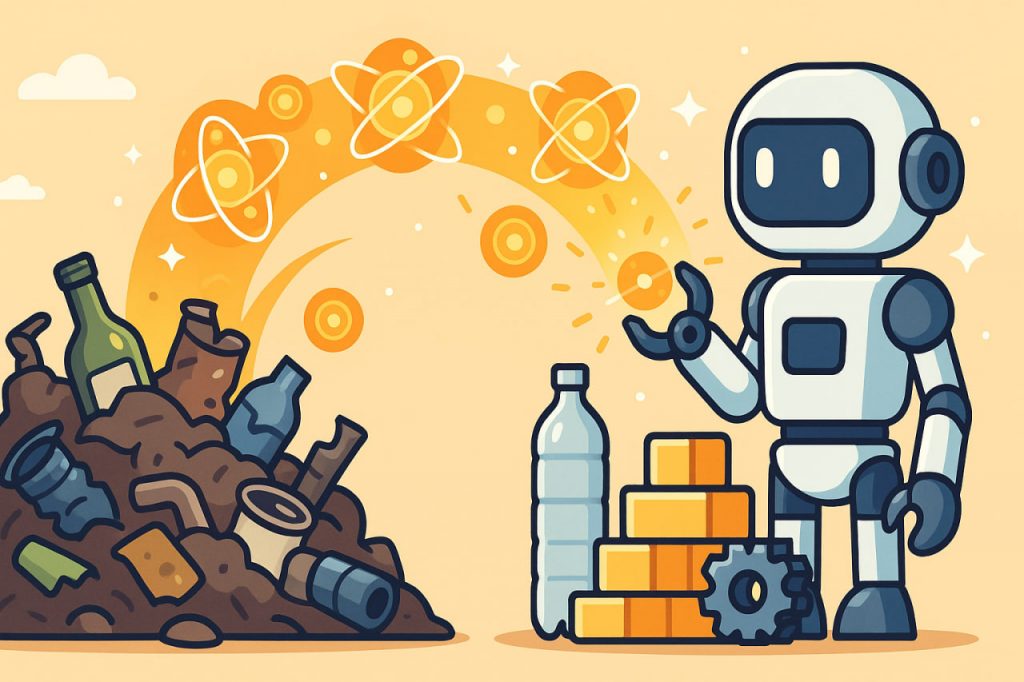The idea of recycling waste down to its atoms sounds like science fiction, but it is rooted in real principles of physics and chemistry. Atoms are the basic building blocks of matter, and in theory, every material can be broken down into them. The challenge lies in doing this economically, safely, and on a large scale. Current recycling systems focus on reusing materials such as plastics, metals, and paper, but atomic-level recycling is still a concept of the future.
What It Means to Recycle into Atoms
Recycling waste into atoms would mean breaking substances apart into their elemental components—carbon, hydrogen, oxygen, iron, and so on. Once separated, these atoms could be reorganized into new, pure materials. For example, plastic bottles could be turned into carbon and hydrogen atoms, which might then be reused to build fuel, new plastics, or even advanced nanomaterials.
Current Technologies Close to This Idea
While true atomic recycling does not yet exist, some technologies move in that direction. Plasma gasification can break down complex waste into simpler molecules using extremely high temperatures. Chemical recycling of plastics disassembles polymers into monomers for reuse. Advances in nanotechnology and synthetic chemistry suggest that future machines could directly manipulate atoms to build desired products, a concept known as molecular manufacturing.
Energy and Safety Challenges
The biggest barrier to atomic-level recycling is the enormous energy cost. Breaking apart molecules into atoms requires immense energy, often more than what can be recovered from the final materials. Additionally, such processes could produce toxic byproducts or radiation if not carefully controlled. Without safe and sustainable technology, atomic recycling remains impractical.
Future Perspectives
If humanity develops highly efficient energy sources, such as nuclear fusion or advanced solar systems, atomic recycling could become realistic. In such a future, landfills and waste dumps might disappear entirely, as every piece of garbage could be reduced to atoms and rebuilt into useful objects. This could revolutionize both environmental protection and resource management.
Conclusion
Today, waste cannot be fully recycled into atoms on an industrial scale, but research in plasma technology, nanotechnology, and advanced chemistry is paving the way. While the idea is still futuristic, it represents a vision where waste is eliminated and resources are endlessly reused.
Interesting Facts
The idea of recycling waste into atoms sounds like science fiction, but it’s rooted in real physics. In theory, any material can be broken down into its atomic components — since all matter is made of atoms — yet doing so requires enormous energy and precise control over atomic bonds. Technologies like pyrolysis, plasma gasification, and molecular recycling already use high temperatures or chemical reactions to convert complex waste (like plastics) into simpler molecules. However, to truly reach the atomic level, one would need to overcome the binding energy that holds atoms together — a process closer to nuclear reactions than traditional recycling. Interestingly, particle accelerators and fusion reactors can manipulate or fuse atoms, but they are far too energy-intensive for practical waste management. Scientists are researching atomic-scale sorting using nanotechnology and AI-driven material recovery, hinting that one day we might recycle matter at near-atomic precision. For now, though, transforming trash directly into atoms remains more of a theoretical frontier than an achievable reality.
Glossary
- Atom – the smallest unit of matter that retains chemical properties.
- Plasma gasification – a process using high-energy plasma to break down waste into basic components.
- Molecular manufacturing – the concept of building products atom by atom.
- Nanotechnology – technology that manipulates matter on the atomic or molecular scale.
- Nuclear fusion – a process of combining atomic nuclei to release vast amounts of energy.


